The global natural language processing or NLP market is experiencing unprecedented growth, projected to reach $439.85 billion by 2030 with a staggering 38.7% CAGR. As organizations worldwide race to implement AI-driven communication solutions, understanding natural language processing technology has become essential for competitive advantage.
From healthcare diagnostics to financial fraud detection, natural language processing applications are revolutionizing how businesses interact with data, customers, and operational processes. This comprehensive guide explores everything enterprise leaders need to know about implementing NLP solutions effectively across global markets.
What is Natural Language Processing? [Definition & Core Concepts]

Natural language processing combines artificial intelligence, machine learning, and computational linguistics to enable computers to understand, interpret, and generate human language. Unlike traditional keyword-based systems, NLP analyzes context, sentiment, and intent to deliver meaningful insights from unstructured text data.
Modern natural language processing systems process vast amounts of textual information in real-time, transforming raw data into actionable business intelligence. The technology encompasses multiple components including tokenization, semantic analysis, entity recognition, and contextual understanding to bridge the gap between human communication and machine comprehension.
NLP vs Machine Learning vs AI: Key Differences Explained
While often used interchangeably, natural language processing, machine learning, and artificial intelligence represent distinct but interconnected concepts. Understanding these differences is crucial for making informed technology decisions in enterprise environments.
Artificial intelligence serves as the umbrella term encompassing all technologies that enable machines to simulate human intelligence. Machine learning represents a subset of AI focused on algorithms that learn from data patterns. Natural language processing specifically addresses language-related challenges within the AI ecosystem.
| Technology | Definition | Primary Focus | Business Application |
| Artificial Intelligence | Broad field enabling machines to simulate human intelligence | Problem-solving, decision-making | Strategic automation, predictive analytics |
| Machine Learning | Subset of AI using algorithms to learn from data | Pattern recognition, prediction | Customer segmentation, recommendation engines |
| Natural Language Processing | Subset of AI focused on human language understanding | Text analysis, language generation | Customer service, content analysis |
How Natural Language Processing Works: Technical Overview
Natural language processing operates through a sophisticated pipeline that begins with text preprocessing, where raw input undergoes tokenization, normalization, and cleaning. Advanced algorithms then apply syntactic analysis to understand grammatical structure, followed by semantic analysis to extract meaning and context.
Deep learning models, particularly transformer architectures like BERT and GPT, enable NLP systems to understand nuanced language patterns, idioms, and cultural references. These models leverage massive datasets to learn language representations that capture both explicit and implicit meanings in human communication across different languages and regions.
Top 12 Natural Language Processing Applications in Business (2025)
1. Healthcare & Medical Data Analysis
Healthcare organizations leverage NLP for medical records analysis, clinical documentation, and diagnostic support. Advanced systems extract critical information from unstructured clinical notes, radiology reports, and research papers to improve patient outcomes and operational efficiency.
Major healthcare providers report 40-60% reduction in documentation time and 25% improvement in diagnostic accuracy when implementing comprehensive natural language processing solutions. The technology enables real-time analysis of patient feedback, medication adherence monitoring, and adverse event detection across global healthcare networks.
2. Financial Services & Fraud Detection
Financial institutions deploy NLP algorithms for real-time fraud detection, risk assessment, and regulatory compliance monitoring. These systems analyze transaction descriptions, customer communications, and regulatory documents to identify suspicious patterns and ensure compliance adherence.
Leading banks achieve 85% accuracy in fraud detection and 50% reduction in false positives through advanced natural language processing implementations. The technology also streamlines Know Your Customer (KYC) processes and automates regulatory reporting requirements across different jurisdictions.
3. Customer Service & Conversational AI
Conversational AI systems powered by NLP handle complex customer inquiries, provide personalized recommendations, and resolve issues across multiple channels. Modern chatbots understand context, maintain conversation history, and escalate complex issues appropriately.
Organizations implementing comprehensive customer service automation report 70% reduction in response times and 45% improvement in customer satisfaction scores. Advanced systems handle 80-90% of routine inquiries without human intervention while supporting multiple languages for global operations.
4. Enterprise Search & Knowledge Management
Enterprise search solutions leverage NLP to understand user intent and deliver contextually relevant results from vast corporate knowledge bases. These systems analyze document content, user behavior, and organizational structure to surface critical information efficiently.
Companies using intelligent search platforms experience 60% reduction in information discovery time and 35% improvement in employee productivity. The technology enables natural language queries against structured and unstructured data sources across international offices.
5. Content Creation & Marketing Automation
NLP-powered content generation tools assist marketing teams in creating personalized content, analyzing brand sentiment, and optimizing messaging across different markets. These systems understand brand voice, target audience preferences, and cultural nuances for global campaigns.
Marketing departments report 50-70% improvement in content production efficiency and 30% increase in engagement rates when implementing natural language processing for content optimization. Advanced platforms support multilingual content creation and cultural adaptation.
6. Legal Document Analysis & Contract Intelligence
Legal professionals utilize NLP for contract analysis, legal research, and document review processes. Advanced systems extract key clauses, identify risks, and ensure compliance with international regulations and local legal requirements.
Law firms and corporate legal departments achieve 80% reduction in document review time and 95% accuracy in contract analysis through natural language processing implementations. The technology supports multiple legal systems and languages for global operations.
7. Supply Chain & Logistics Optimization
Supply chain management benefits from NLP through automated vendor communications, risk assessment, and logistics optimization. Systems analyze supplier feedback, shipping documents, and market intelligence to improve operational efficiency.
Organizations implementing NLP in supply chain operations report 25-40% improvement in vendor response times and 30% reduction in logistics costs. The technology enables real-time monitoring of global supply networks and automated risk detection.
8. Human Resources & Talent Management
HR departments leverage NLP for resume screening, employee sentiment analysis, and performance evaluation. Advanced systems analyze job applications, employee feedback, and performance reviews to improve talent management processes.
Companies using NLP in HR achieve 60% reduction in recruiting time and 40% improvement in employee retention rates. The technology supports bias detection and ensures fair evaluation processes across diverse global workforces.
9. Business Intelligence & Market Research
Market research organizations utilize NLP for social media monitoring, competitor analysis, and customer sentiment tracking. These systems analyze millions of online conversations to provide actionable business insights.
Research firms report 80% improvement in data analysis speed and 50% increase in insight accuracy when implementing comprehensive natural language processing solutions. The technology enables real-time market monitoring across multiple languages and regions.
10. E-commerce & Recommendation Systems
E-commerce platforms deploy NLP for product search, recommendation engines, and customer review analysis. Advanced systems understand user intent, analyze product descriptions, and provide personalized shopping experiences.
Online retailers achieve 35-50% improvement in search accuracy and 25% increase in conversion rates through NLP-powered recommendation systems. The technology supports multiple languages and currencies for global marketplaces.
11. Manufacturing & Quality Control
Manufacturing industries implement NLP for quality control documentation, maintenance reports, and safety compliance monitoring. Systems analyze inspection reports, maintenance logs, and safety incidents to improve operational efficiency.
Manufacturing companies report 45% reduction in quality issues and 30% improvement in maintenance efficiency when implementing natural language processing for operational analysis. The technology supports multilingual documentation across global manufacturing networks.
12. Education & Training Platforms
Educational institutions utilize NLP for automated grading, personalized learning, and student feedback analysis. Advanced systems adapt content delivery based on learning patterns and provide real-time educational support.
Educational organizations achieve 50-70% improvement in personalized learning outcomes and 40% reduction in administrative workload through NLP implementations. The technology supports multiple languages and cultural learning preferences.
Leading NLP Tools & Platforms Comparison
1. Enterprise Solutions: IBM Watson vs Google Cloud vs Azure
Enterprise-grade NLP platforms provide comprehensive language processing capabilities with enterprise security, scalability, and support features. These solutions integrate with existing business systems and support global deployment requirements.
IBM Watson Natural Language Understanding excels in industry-specific models and advanced entity recognition. The platform offers pre-trained models for healthcare, finance, and legal industries with strong compliance features for regulated environments.
| Platform | Strengths | Best For | Regional Availability |
| IBM Watson NLU | Industry models, compliance features | Regulated industries, large enterprises | Global with data residency options |
| Google Cloud Natural Language | Multilingual support, AutoML capabilities | Global organizations, diverse languages | Worldwide with regional data centers |
| Microsoft Azure Cognitive Services | Office 365 integration, hybrid deployment | Microsoft ecosystem users | Global with sovereign cloud options |
Open Source Frameworks: spaCy vs NLTK vs Transformers
Open source NLP libraries offer flexibility and cost-effectiveness for organizations with strong technical capabilities. These frameworks enable custom model development, fine-tuning for specific domains, and integration with existing technology stacks.
spaCy provides production-ready NLP capabilities with excellent performance and easy integration. The library supports over 20 languages and offers pre-trained models optimized for speed and accuracy in enterprise environments.
NLTK (Natural Language Toolkit) serves as an educational and research-focused platform with comprehensive linguistic resources. The framework provides extensive documentation and learning materials for organizations building NLP expertise internally.
Hugging Face Transformers offers state-of-the-art pre-trained models including BERT, GPT, and T5. The library provides easy access to cutting-edge research models with fine-tuning capabilities for specific business applications.
2. API Services: OpenAI vs Anthropic vs Cohere
NLP API services provide immediate access to advanced language processing capabilities without extensive infrastructure investment. These services offer pre-trained models for common use cases plus customization options for specific business requirements.
OpenAI API delivers powerful language generation and understanding capabilities through GPT models. The service supports text completion, summarization, translation, and question-answering with high accuracy across multiple languages.
Anthropic Claude focuses on safe and helpful AI interactions with strong reasoning capabilities. The platform excels in complex analysis tasks and maintains high safety standards for enterprise deployments.
| Service | Strengths | Pricing Model | Regional Compliance |
| OpenAI API | Advanced generation, broad capabilities | Token-based, volume discounts | SOC 2, enterprise agreements |
| Anthropic Claude | Safety focus, reasoning excellence | Message-based, enterprise tiers | Privacy-focused, compliance ready |
| Cohere | Enterprise focus, fine-tuning options | Usage-based, dedicated instances | Global deployment, data residency |
Implementation Guide: Getting Started with NLP
Step-by-Step Development Process
Successful NLP implementation begins with comprehensive needs assessment and strategic planning. Organizations must identify specific use cases, evaluate data readiness, and establish success metrics before technology selection and deployment.
Phase 1: Discovery and Planning involves stakeholder interviews, use case prioritization, and technical requirements gathering. Organizations should assess data quality, privacy requirements, integration complexity, and resource availability during this critical phase.
Phase 2: Proof of Concept Development focuses on building minimal viable solutions for high-priority use cases. This phase validates technical assumptions, demonstrates business value, and builds organizational confidence in natural language processing capabilities.
Phase 3: Production Deployment includes full-scale implementation with monitoring, security, and compliance controls. Organizations must establish operational procedures, user training programs, and continuous improvement processes for long-term success.
Common Challenges & Solutions
Data quality issues represent the most significant implementation challenge, with 60-70% of NLP projects encountering data-related obstacles. Poor quality training data leads to inaccurate results and reduced user confidence in the system.
Integration complexity challenges arise when connecting NLP systems with existing enterprise applications. Organizations should plan for API development, data transformation requirements, and workflow modifications during implementation planning.
Common implementation challenges include:
- ✗ Data quality and availability issues affecting model accuracy
- ✗ Integration complexity with legacy systems and databases
- ✗ Scalability limitations during peak usage periods
- ✗ Change management resistance from end users and stakeholders
- ✗ Regulatory compliance concerns in regulated industries
- ✗ Multilingual support requirements for global operations
ROI Measurement & Success Metrics
ROI measurement for NLP implementations requires both quantitative and qualitative metrics. Key performance indicators include processing accuracy, response time improvement, cost reduction, and user satisfaction scores across different regions and business units.
Financial metrics typically focus on operational efficiency gains, revenue increases from improved customer experience, and cost savings from automation. Leading organizations achieve 200-400% ROI within 18-24 months of comprehensive NLP deployment.
| Metric Category | Key Indicators | Target Improvement | Regional Variations |
| Operational Efficiency | Processing time, automation rate | 40-60% reduction | Higher in developed markets |
| Quality Metrics | Accuracy, precision, recall | 85-95% target range | Language-dependent variations |
| User Experience | Satisfaction scores, adoption rates | 20-30% improvement | Cultural preference differences |
| Financial Impact | Cost savings, revenue increase | 200-400% ROI | Currency and market variations |
NLP Market Trends & Future Predictions (2025-2030)

1. Regional Market Growth and Opportunities
The global NLP market demonstrates exceptional growth potential across all major regions with distinct characteristics and opportunities. North America maintains market leadership with 30.1% market share, driven by enterprise adoption and technology innovation.
Asia Pacific represents the fastest-growing region at 22.7% CAGR, led by mobile adoption, government digitization initiatives, and rapidly expanding technology infrastructure. Countries like India, China, and Southeast Asian nations drive significant growth in multilingual NLP applications.
Europe focuses on regulatory compliance, multilingual capabilities, and privacy-preserving implementations. The region emphasizes GDPR compliance, ethical AI development, and cross-border language processing for diverse European markets.
2. Technological Advancements Shaping the Future
Multimodal AI integration represents the next frontier, combining text processing with image, audio, and video analysis. This convergence enables more sophisticated understanding of human communication across all digital channels and cultural contexts.
Real-time language translation continues advancing toward human-level accuracy, with neural machine translation achieving 95%+ accuracy for major language pairs. This capability transforms global business operations and enables seamless international collaboration.
Quantum computing integration promises to revolutionize NLP processing speeds and model complexity. Early quantum-classical hybrid systems demonstrate 10-100x performance improvements for specific language processing tasks, particularly in cryptography and complex reasoning.
3. Geographic Content Customization Strategies
North American Market Focus:
- Enterprise ROI optimization and productivity metrics
- SOX and HIPAA compliance frameworks for regulated industries
- Integration with major US cloud providers (AWS, Microsoft, Google)
- Focus on customer experience improvement and operational efficiency
European Market Adaptation:
- GDPR compliance and privacy-by-design implementations
- Multilingual model capabilities for 24+ official EU languages
- European AI Act compliance and ethical AI development practices
- Cross-border data processing and sovereignty requirements
Asia Pacific Regional Considerations:
- Mobile-first implementation strategies for high smartphone adoption
- Multi-language support including Chinese, Japanese, Korean, and Hindi
- Government digitization initiatives and smart city implementations
- Cultural sensitivity in language processing and communication styles
Frequently Asked Questions About Natural Language Processing
What makes NLP different from traditional search engines?
Traditional search engines rely primarily on keyword matching and link analysis to return results. Natural language processing systems understand context, intent, and semantic meaning to provide more relevant and personalized responses to user queries.
NLP-powered search can interpret complex questions, understand synonyms and related concepts, and provide contextually appropriate answers even when exact keywords don’t match. This capability particularly benefits global organizations serving diverse linguistic communities.
How accurate are enterprise NLP systems in different languages?
NLP accuracy varies significantly based on language, use case, and implementation approach. English-language systems typically achieve 85-95% accuracy for common tasks, while major European and Asian languages achieve 80-90% accuracy with specialized models.
Less common languages may achieve 70-85% accuracy depending on available training data and model optimization. Organizations should evaluate accuracy requirements against business needs and consider custom model development for critical applications.
What security considerations apply to NLP implementations?
Data security for NLP systems requires comprehensive protection of training data, model parameters, and processed content. Organizations must implement encryption, access controls, and audit trails throughout the natural language processing lifecycle.
Key security considerations include data anonymization, secure model deployment, API security, and protection against adversarial attacks. Enterprise implementations should follow industry security frameworks and regulatory requirements for their specific sectors.
Can NLP integrate with existing business systems?
Modern NLP platforms offer extensive integration capabilities through APIs, webhooks, and direct database connections. Most enterprise solutions provide pre-built connectors for popular business applications including CRM, ERP, and collaboration platforms.
Integration complexity depends on existing system architecture, data formats, and business workflow requirements. Organizations should plan for integration testing, data transformation needs, and workflow modifications during implementation.
What are the ongoing costs of NLP maintenance?
NLP maintenance costs include model retraining, performance monitoring, infrastructure scaling, and security updates. Cloud-based solutions typically charge based on usage volume, while on-premises deployments require dedicated infrastructure and technical resources.
Organizations should budget for continuous model improvement, data quality maintenance, and user training programs. Total cost of ownership typically ranges from 20-40% of initial implementation costs annually, varying by deployment model and usage patterns.
How does NLP handle cultural and linguistic nuances?
Advanced NLP systems incorporate cultural context, regional variations, and linguistic nuances through specialized training data and model architectures. These systems understand idioms, cultural references, and communication styles specific to different regions and communities.
Multilingual NLP models support cultural adaptation through localized training datasets, regional language variants, and cultural context recognition. Organizations serving global markets should prioritize platforms with strong multilingual and cross-cultural capabilities.
The Strategic Imperative: Building Your NLP-Powered Future
The natural language processing revolution represents more than technological advancement—it’s fundamentally reshaping how organizations interact with information, customers, and operational processes across global markets. Early adopters gain significant competitive advantages through improved efficiency, enhanced customer experiences, and data-driven decision-making capabilities.
Success in the NLP-powered future requires strategic thinking, thoughtful implementation, and commitment to continuous learning. Organizations that invest in understanding and deploying these technologies position themselves for sustained growth in an increasingly AI-driven business landscape spanning multiple continents and cultures.
The journey toward intelligent language processing begins with recognizing that the future of business communication transcends geographic and linguistic boundaries. The question isn’t whether to implement NLP solutions, but how quickly and effectively organizations can harness their transformative potential for global success.
References
- Statista. (2025). Natural Language Processing – Global Market Forecast.
- Grand View Research. (2024). Natural Language Processing Market Size, Share & Forecast 2025.
- Future Market Insights. (2025). Natural Language Processing (NLP) Market Analysis.
- StartUs Insights. (2025). Natural Language Processing Market Report 2025.
- ScienceDirect. (2024). Advancements in natural language processing: Implications, challenges, and future directions.
- IBM Think. (2024). What Is NLP (Natural Language Processing)?
- Mordor Intelligence. (2024). Natural Language Processing Market | Industry Report, 2030.
- The Business Research Company. (2025). Natural Language Processing (NLP) Market Report 2025.
- Lumenalta. (2025). Natural language processing models in 2025.
- TekRevol. (2024). The Future of Natural Language Processing: Trends to Watch in 2025 and Beyond.


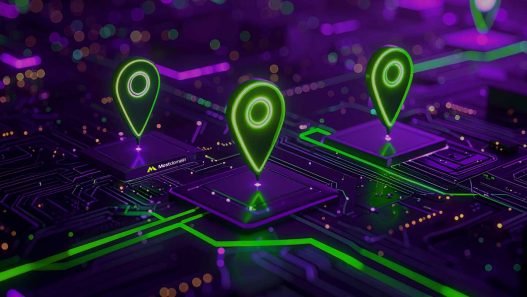

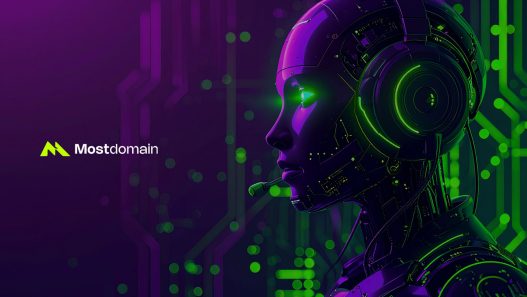




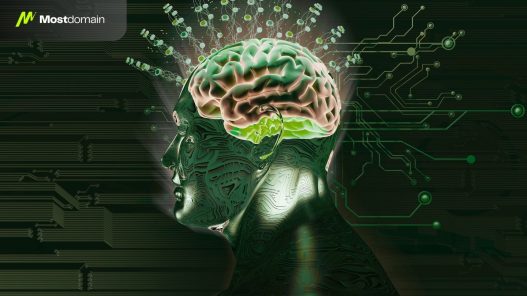
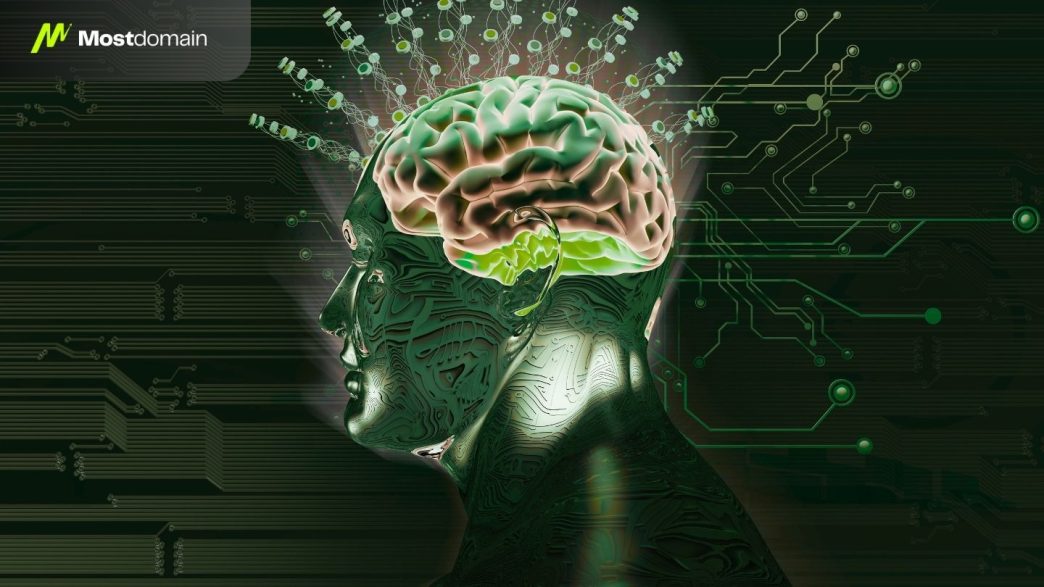



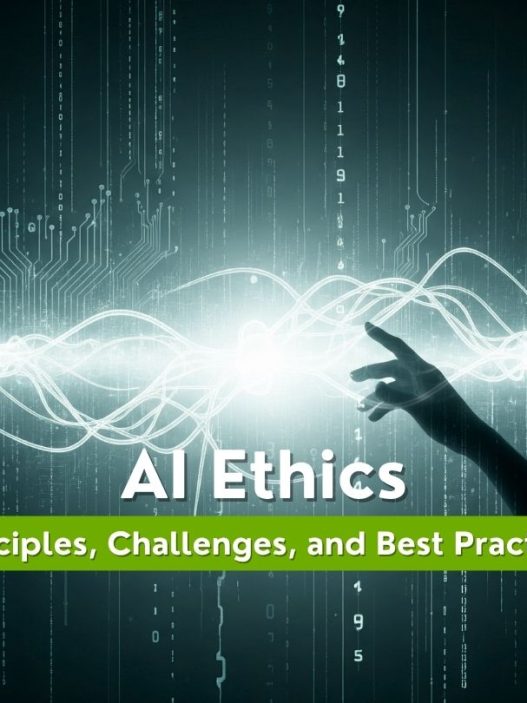


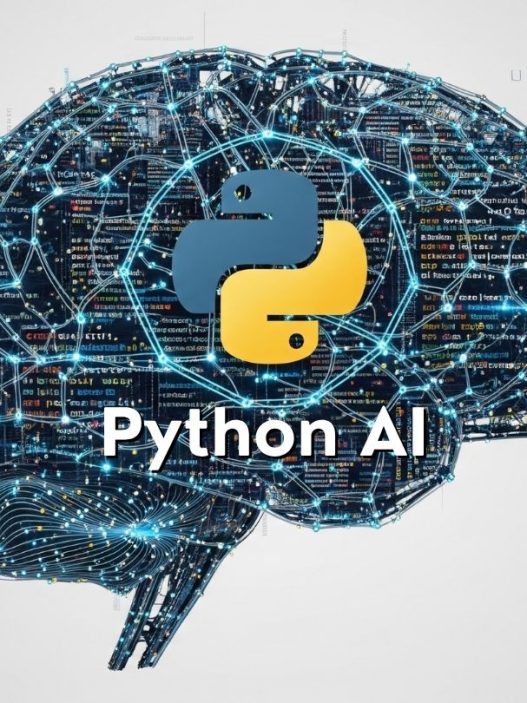
![AI Chatbot: Best Platforms, Implementation & Use Cases [2025]](https://mostdomain.net/wp-content/uploads/2025/08/AI-Chatbot-mostdomain.net_-527x703.jpg)


